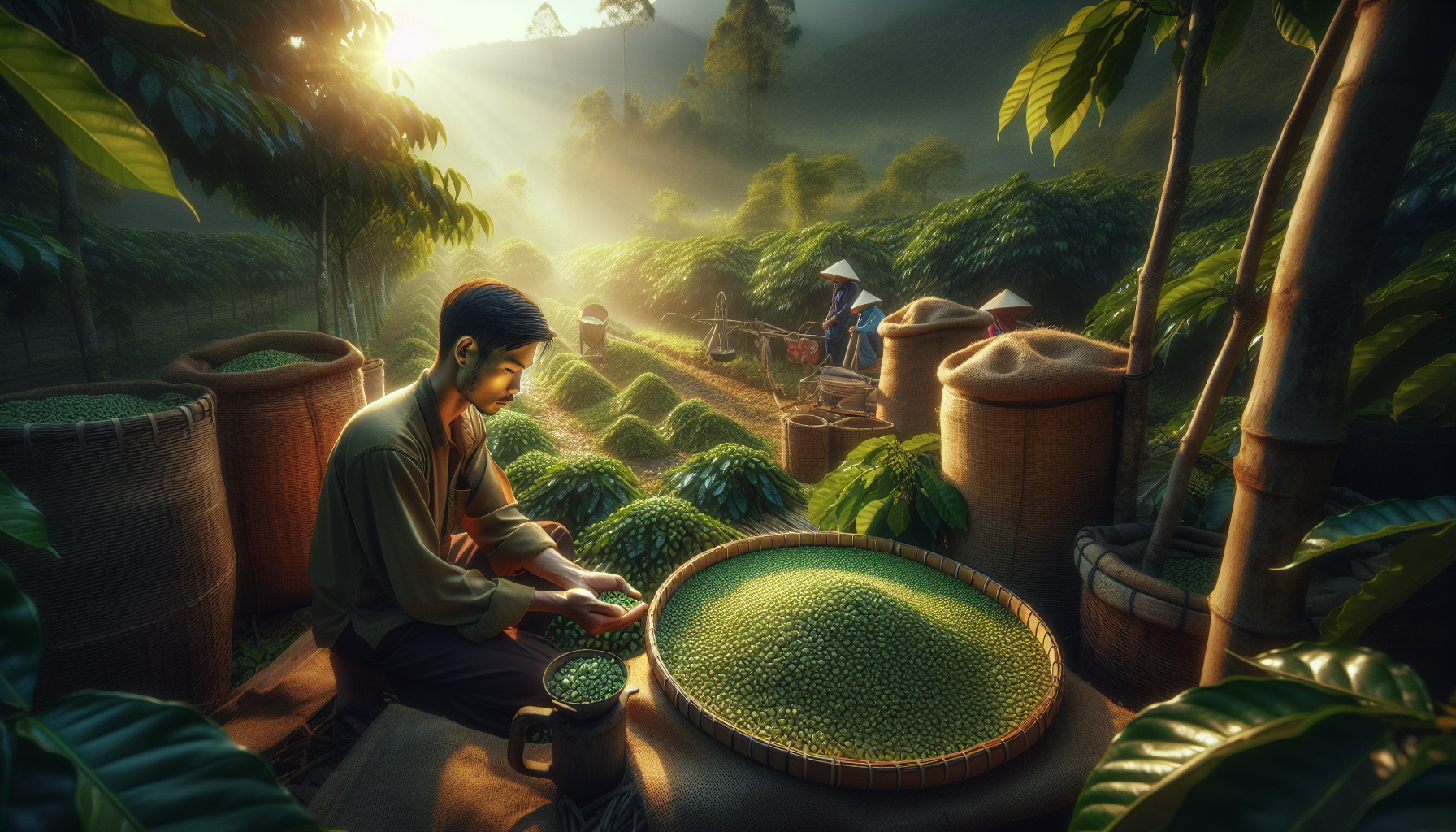
<h2>Understanding Green Coffee Beans</h2>
<p>Green coffee beans, also known as unroasted coffee, are one of Vietnam’s key agricultural export products. With a proud track record, Vietnam ranks second in the world in coffee exports, focusing particularly on major markets such as Germany, the United States, and Spain. The primary goal of green coffee is not only to serve domestic consumption but also to expand into international markets, opening opportunities for roasters and importers worldwide.</p>
<h2>Types of Green Coffee Beans</h2>
<p>Green coffee beans are mainly categorized into two important types: Arabica and Robusta. Arabica, also known as “cà phê chè” in Vietnamese, is typically grown in highland areas above 1,000 meters with cool climates. Popular Arabica varieties include Caturra, Mocha, Bourbon, Typica, and Catimor. Robusta, on the other hand, is commonly cultivated in lowland tropical climates with abundant sunshine. It is a sun-loving plant, more resistant to diseases, and contains higher caffeine content than Arabica. Another lesser-known type grown in Vietnam is Excelsa, also called “cà phê mít.”</p>
<h2>Classification and Processing Methods</h2>
<p>Green coffee beans are classified based on several factors such as bean size, processing method, and origin. The three main processing methods are natural (dry), washed (wet), and honey process. These methods directly influence the flavor profile and value of the coffee. Another key classification factor is bean screen size, with common grades including screen 18 (7.1mm) and screen 16 (6.3mm).</p>
<h2>Production and Storage Process</h2>
<p>The production of green coffee involves several stages from harvesting to storage. After harvesting, the coffee cherries are processed to extract the beans. Depending on whether the processing method is dry or wet, different types of coffee are produced. After processing, beans must be dried and stored properly to maintain their quality. Common storage practices include keeping beans in burlap sacks in temperature-controlled warehouses or in sealed silos.</p>
<h2>Value and Applications of Green Coffee</h2>
<p>The price of green coffee depends on factors such as bean size, variety, and processing method. Arabica beans generally fetch higher prices than Robusta. Beans that are polished and wet-processed typically have a higher market value. Green coffee is the primary raw material for ground coffee and instant coffee, and it can also be decaffeinated to produce decaf coffee. In addition, green coffee extract is used in weight loss supplements and health products.</p>
<h2>Conclusion</h2>
<p>Green coffee is not only an economically valuable product but also a vital component of the global coffee industry. A thorough understanding of green coffee—from production processes to proper storage—helps enhance the competitiveness of Vietnamese coffee in the international market. This not only broadens export opportunities but also strengthens Vietnam’s position on the global coffee map.</p>
